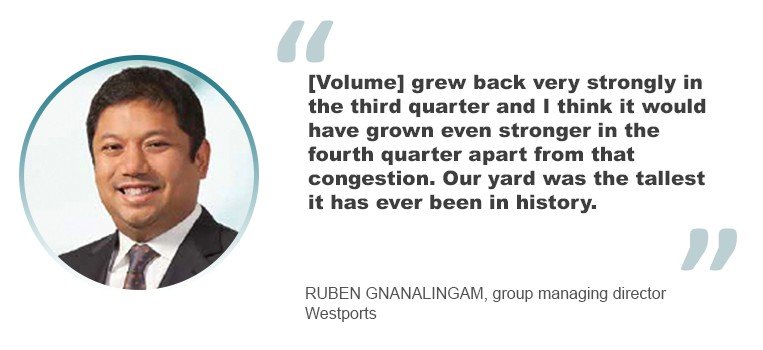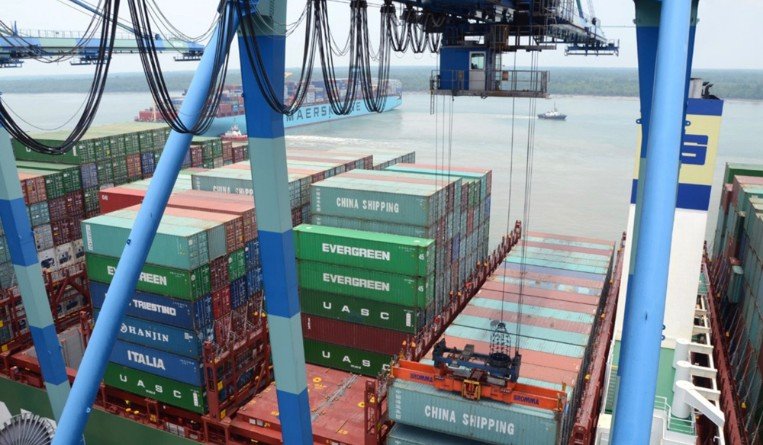New ways of working for ASEAN’s ports ahead of an expected return of business were discussed during a recent Transport Events webinar.
Framing the issue is the experience of Malaysia’s Port Klang, where a year-end bounce brought the problems of demand such as delays, missed port calls and transhipment boxes not moving, said K. Subramaniam, general manager of the Port Klang Authority.
The scale of the leap at Port Klang was underlined by another speaker,Ruben Gnanalingam, group managing director, Westports, which is part of Port Klang.

Overall, last year’s container throughput of 10.5 million TEUs was down only 3% on 2019s total of 10.8 million. However, the second quarter last year was significantly down on the same period in 2019, whereas the third quarter last year saw more containers moved than in 2019.
“[Volume] grew back very strongly in the third quarter and I think it would have grown even stronger in the fourth quarter apart from that congestion,” Gnanalingam said. ”Our yard was the tallest it has ever been in history.”
The concern is that once things get back to normal, which is seen as likely to happen once mass vaccinations have taken place, these problems could be global and will lead to large-scale supply chain disruption. “Can you imagine what will happen if there is to be a total lifting of all restrictions in the coming months?” said Subramaniam. “How are we going to handle this spike?”
Subramaniam’s advice was for ports to ask how prepared they are with a trio of questions: Are they prepared with the right tools? Can increased demand be catered to? And, have lessons been learned?
“Have we learnt the lessons from what we have seen over the past year or is it a flash in the pan?” he asked.
Some are already moving and fast on the lessons of the past year. One of the immediate lessons from Port Klang is how important digital communications are, with the plan being to go totally paperless. Capacity is not forgotten, with plans to develop Carey Island to the fore.
Westport, though, has already moved on both these areas in terms of its existing capacity by converting a common yard to a container yard and is midway through adding a significant number of cranes. Four rubber-tyre gantry cranes added at the end of last year will be joined by eight more in the first quarter of this year, and 22 more which are expected to be added in the third quarter of 2022. Two new quay cranes are in place now, with a further eight QCs to be delivered in the first and third quarters of 2022. Over a thousand new ground slots will be added during the last three months of this year as well.
Longer term it plans to increase the number of container terminals from the current ten to seventeen starting in 2024 with work beginning “almost immediately” the final paperwork is signed off.
Fitting in with Port Klang’s goal of being all digital, as of July, Westports will do no more offline transactions. “That’s our goal. We are also encouraging others to do so as well. It makes things smoother and adds to the transparency of the supply chain,” said Gnanalingam.
Overshadowing these plans is an awareness that things are unpredictable both in terms of how the vaccine rollout, seen as key to restoring consumer confidence, will go, and how the pandemic itself, as well as the economy, will develop. A lot hinges on how consumers will spend their money once lockdowns end, but there is an expectation after the initial disruption that there will be a new equilibrium.
Not that there is much consensus about when things will back to a “sort-of normal.” Some, such as Gnanalingam, point to low single-digit growth this year and normality in 2024, while others, such as Lean Hin Ooi, chair of the Shipping Association of Malaysia, take a tri-partite approach.
Container equipment, he believes, will find a new working balance in the second half of this year. “As I speak I can see that improving day-by-day, but still it’s a bit tight,” he said. By contrast, vessels, because of disruption in US and European ports, will not get there until next year.
Global container freight rates overall will come down gradually to a fair margin, avoiding the destructive levels reached pre-pandemic, although he gave no prediction for a timeline. Container operators, he warned, will have to reset their business operations in the wake of the pandemic.
Importers and exporters can undertake measures to help smooth this situation, Ooi told the webinar. This begins with a review of procedures to improve landside working procedures.
Michael Mackey



